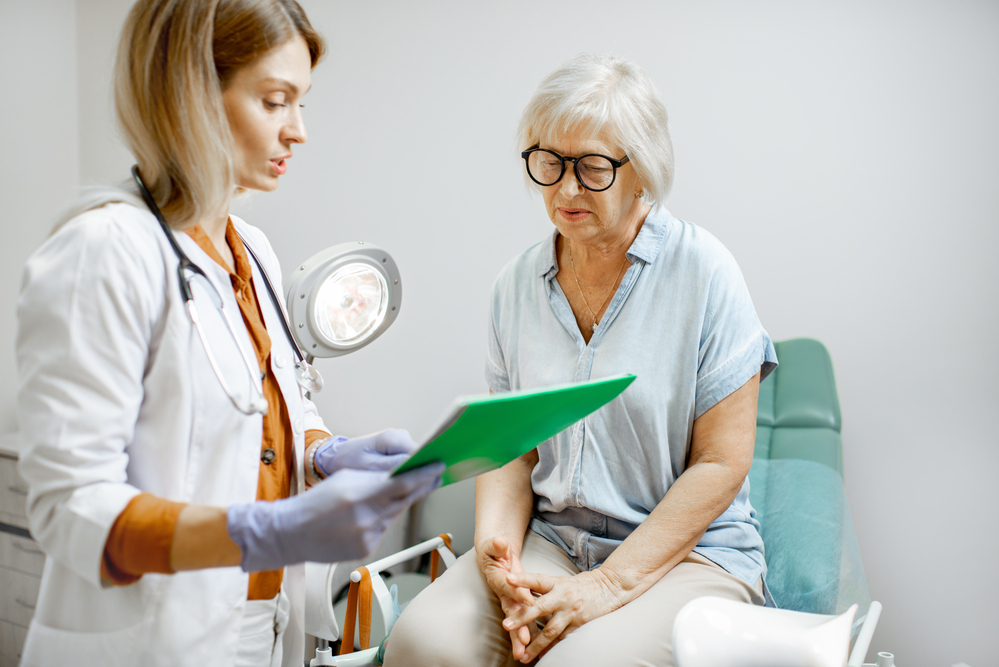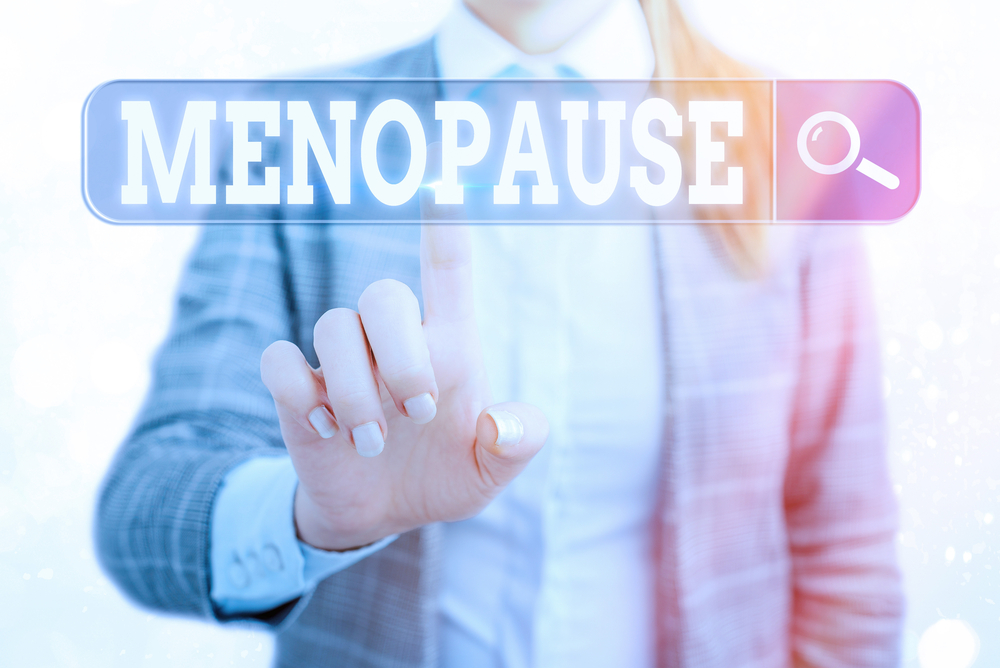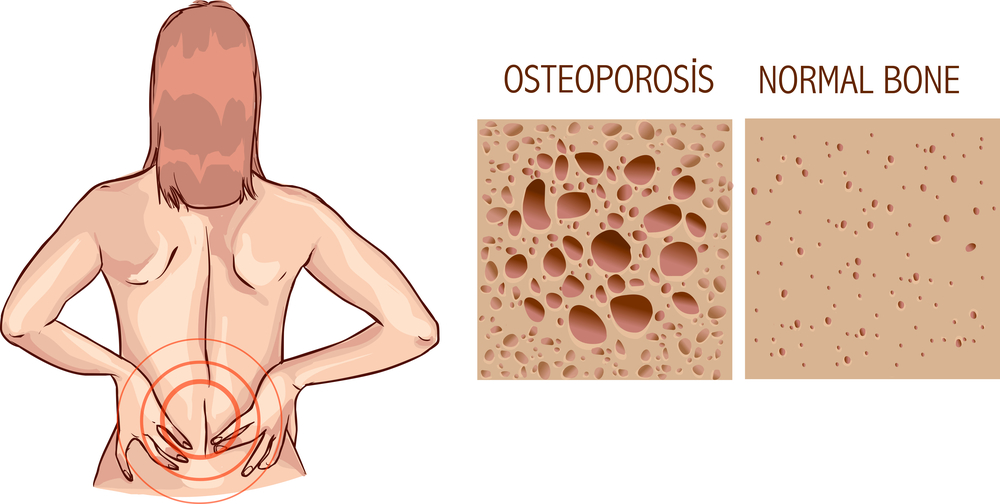Eat to beat the menopause

Menopause – those years which mark the end of a woman’s reproductive life and when a woman’s hormones cease can be a blessing or a curse. Around 80 per cent of women experience the unpleasant symptoms of menopause like hot flushes, night sweats, vaginal dryness, depression, moodiness, irritability and sleeplessness. The rest simply sail through those years between 45 and 55 with nothing more than irregular periods.
However it affects you, this is a time to pay attention to your daily diet. Good food and a healthy lifestyle can help avoid many menopause-related problems like overweight, heart disease and osteoporosis and will make this time easier.
Don’t forget that women live around one-third of their lives AFTER the menopause, so optimizing physical and mental health with a focus on better ageing becomes even more important. Here are four key dietary strategies that will help you around the ‘change of life’.
1. Phyto-oestrogens - to soy or not to soy?
Soy and their natural phyto-oestrogens have been viewed by some as an alternative to hormone replacement therapy (HRT) to treat menopausal symptoms. Isoflavones are a group of phyto-oestrogens which are similar in structure to our own human oestrogens (hormones). They can ‘top up’ oestrogen levels during the change of life years when the ovaries wind down their production of oestrogen.
In addition, isoflavones have been shown to bind to the body’s receptors for oestrogen, but they only stimulate them weakly, so they reduce oestrogen’s activity. In other words, they have a ‘normalising’ effect on hormones – they boost levels when they’re low and counteract levels when they’re too high.
Originally Asian women, where soy is a dietary staple, have been shown to have fewer hot flushes. This led to soy’s role as an alternative ‘oestrogen treatment’ for women who were fearful of HRT or advised not to take it. However, when studies looked more closely at soy's effects on menopausal symptoms, the results were mixed. For every positive study, there has been another showing no soy-related benefits.
What did become clear was that Asian women eat whole soy foods such as tofu, edamame and miso, NOT the processed soy milks or soy burgers popular in Western cultures. Other sources of these plant hormones are linseeds (flaxseeds), lentils, chick peas and other beans, and salad sprouts, but levels are not as high as in soy foods.
Eating foods made from soy is fine, but high-dose phyto-oestrogen supplementation (say from red clover extract Promensil or black cohosh extract Remifemin) is not recommended or justified at this stage. Many herbal remedies are natural sources including dong quai, hops, liquorice root, fennel seeds, black cohosh and ginseng, which may explain some of their benefits. None of these have shown great benefits for improving hot flushes or other problems of the menopause.
What you can do:
Talk to your GP or gynaecologist about the pros and cons of HRT especially if you have had, or are at risk of breast cancer, stroke, heart attack and blood clotting. The medical reviews are certainly good but it needs to be looked at in the context of your own individual circumstances.

Self-management strategies
These are useful against hot flushes.
- Plan to dress in layers, carry a fan, always have a cool drink and a facial water spray.
- Avoid spicy foods, caffeine and alcohol.
2. Minimise the mid-life spread
As we age, our metabolic rate slows so it becomes easier to put on kilos. This deposition of abdominal fat is also due in part to the drop in hormones at the time of the menopause. Menopause increases body fat and at the same time decreases fat-free or lean body mass.
This additional fat is visceral or central fat, which is associated with metabolic conditions such as heart disease and diabetes. Researchers believe that HRT can delay this body fat redistribution.

Weight gain does not have to be automatic and can be prevented by healthy eating and exercise. Remember that the menopause is also associated with less time committed to rearing children, increased socialising and often a move away from sport and activity – all factors that cause middle-age sprea- and that can be changed.
What you can do:
- Keep processed foods such as potato chips or doughnuts to a minimum
- Be moderate with alcohol – it ‘encourages’ fat storage
- Eat plenty of vegetables and salads
- Go for high-fibre or wholemeal breads and cereals
- Eat light but regular meals (don’t skip meals)
- Exercise every day or every second day
- Steer clear of diets – think ‘eating for my health’ rather than ‘lose 2 kgs in a week’
- Go for a walk after dinner if you tend to comfort eat
See here for more on weight loss while boosting your energy levels.
3. Keep your bones strong
The menopause accelerates the loss of calcium, magnesium, potassium and other minerals from our bones, setting the scene for osteoporosis as we age. Rates of loss are high – as much as 20 per cent of bone for the first five years following the menopause - while fractures affect around 50 per cent of elderly post-menopausal women.
Obviously, you need to consider the density or strength of your bones long before the menopause begins. The peak bone density you achieve in your early 20s is critical to warding off osteoporosis in later years. More on this here.
 However, you can still save your bones by reducing the rate of calcium loss or by increasing calcium intake (preferably from foods). The recommended intake for women over 50 is 1,300 mg a day, up from the 1,000 mg of earlier years. See the ways you can boost your intake of calcium-rich foods below.
However, you can still save your bones by reducing the rate of calcium loss or by increasing calcium intake (preferably from foods). The recommended intake for women over 50 is 1,300 mg a day, up from the 1,000 mg of earlier years. See the ways you can boost your intake of calcium-rich foods below.
Osteoporosis is easier to prevent than to treat. Calcium-rich foods or calcium supplements are important but you also need to take bone-enhancing medication to gain benefit. Calcium alone is of no use. In the past, hormone therapy with oestrogen, or a combination of oestrogen plus progesterone, was considered the best way to prevent postmenopausal osteoporosis. Today, however, oestrogen is not recommended for the treatment of osteoporosis. Studies now show that it does not reduce the risk of coronary artery disease, and it slightly increases the risk of breast cancer, stroke and blood clots.
Your body needs vitamin D which is made from sunlight in order to absorb calcium. So, a lack of sun exposure can mean you are not getting enough vitamin D. Read more here. Most osteoporosis medicine is prescribed for many years and patients have benefited from this long-term use in slowing bone loss and so reducing the risk of fracture. Medicines that can slow the rate at which bone is broken down and removed include:
- Bisphosphonates (e.g. Fosamax)
- Denosumab (e.g. Prolia)
- Selective oestrogen receptor modulators (SERMS)
- Hormone replacement therapy (HRT)
- Teriparatide (e.g. Forteo)
What you can do:
- Eat at least 4 serves of calcium-rich foods each day from yoghurt, milk, fortified plant mylks such as fortified soy mylk, cheese as well as from almonds, green vegetables and whole grains
- If you can’t on every day, consider a calcium supplement
- Start a weight-bearing exercise program such as regular walking, dance, exercise classes, tennis or golf
- Speak to your doctor about HRT or other bone-maintaining medications
- Eat mineral-rich foods like vegetables, fruit, herbs, whole grains
- Get outdoors to boost your vitamin D but avoid the hotter times in summer which will only expose you to a greater risk of skin cancer. You only need around 10 minutes of exposure to the sun of your hands, face and arms to produce enough vitamin D but this varies depending on your type of skin and where you live.
4. Have a healthy heart
Heart disease risk rises during the menopause as the protective effect of female hormones wanes. In fact, US figures estimate that the menopause triples the risk of heart disease for women, putting them on a par with men. With heart disease still the largest cause of death for Australian women – accounting for around 30 per cent of all female deaths – looking after your heart becomes a priority for women over 50.
 There is no disputing the evidence for cutting back on saturated fat (from fatty or processed meats, fried take-aways, high-fat snacks, biscuits and pastries) but now there are protective foods you can add to your meals. For example, plant sterols can lower cholesterol, especially the bad LDL-cholesterol, an effect separate to saturated fat. Omega-3 fats can steady the beating of the heart so preventing fatal arrhythmias, while vegetables, fruit and the occasional glass of wine add a bonus of antioxidants to protect against artery ‘clogging’.
There is no disputing the evidence for cutting back on saturated fat (from fatty or processed meats, fried take-aways, high-fat snacks, biscuits and pastries) but now there are protective foods you can add to your meals. For example, plant sterols can lower cholesterol, especially the bad LDL-cholesterol, an effect separate to saturated fat. Omega-3 fats can steady the beating of the heart so preventing fatal arrhythmias, while vegetables, fruit and the occasional glass of wine add a bonus of antioxidants to protect against artery ‘clogging’.
What you can do:
- A minimum of saturated fat from butter, cream, coconut, crisps and snack foods, deep-fried foods, cakes and biscuits (unless you make them with healthy fats)
- Eat more mono- and polyunsaturated oils, spreads, avocados, seeds and mayonnaises
- Eat a handful of nuts a day (around 50 grams)
- Eat 1-2 serves of soluble fibre from oats, rice bran, barley bran, psyllium or dried beans
- Eat 2 serves of oily fish each week for omega fats, as well as from linseed and hemp hearts
- Have a glass of wine, preferably red wine
- Eat plenty of vegetables, fruit (particularly apples), onions and tea
The bottom line
View your menopause as something positive! It’s an opportunity to monitor health, manage weight and improve your lifestyle to promote healthy ageing. So, start today to make improvements including quitting smoking, eating well, exercising regularly and incorporating a relaxation technique such as mediation or yoga. A healthy diet around the time of the menopause can certainly help.



